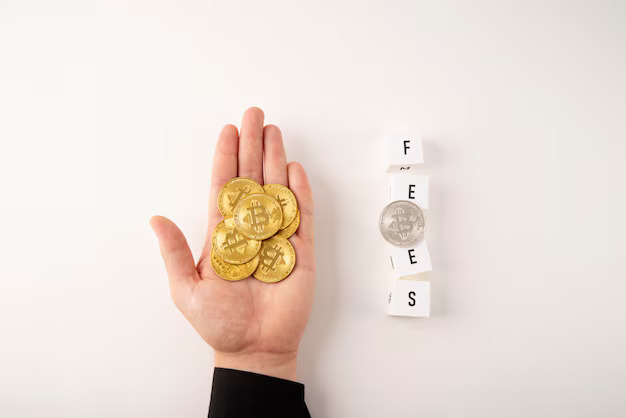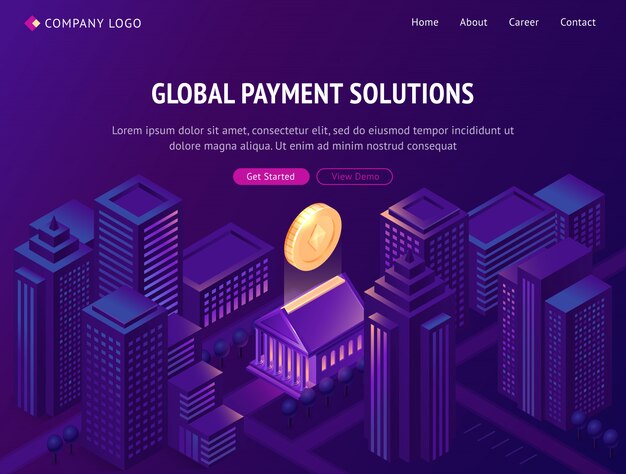Creating a Token Crypto token – Step-by-step cryptocurrency

Have you ever wondered what it takes to create your own digital currency? In this comprehensive article, we will embark on an exciting journey together as we uncover the step-by-step process of bringing a token to life. By the end of this guide, you will have gained a thorough understanding of the intricacies involved in crafting a unique token in the ever-evolving world of cryptocurrency.
Through a series of well-defined steps, we will explore everything from conceptualizing the token’s purpose to implementing its functionality. We will navigate through the technical and design aspects involved, ensuring that you are equipped with the knowledge necessary to create a successful token that resonates with your audience.
Get ready to unleash your creativity and push the boundaries of the blockchain landscape! Whether you’re a seasoned developer or simply intrigued by the exciting realm of cryptocurrencies, this guide will empower you to bring your vision to fruition. So, let’s dive in and unravel the mysteries of token creation, one step at a time.
Understanding Tokens create a crypto token
In order to gain a comprehensive understanding of the process behind creating a token, it is crucial to grasp the concept of tokens themselves and their significance in various contexts. Tokens, in essence, can be considered as digital representations or units of value that hold specific characteristics and functionalities.
These tokens serve as a means of transacting, trading, and storing value within a particular ecosystem. They can represent assets, ownership rights, or even access to certain services or functionalities. Tokens can be created on various blockchain platforms, each with its own unique set of features and capabilities.
The Importance of Tokens in Digital Economies
Tokens play a pivotal role in empowering decentralized digital economies. They enable seamless peer-to-peer transactions, reducing the need for intermediaries and promoting trust and transparency. By leveraging blockchain technology, tokens can be securely transferred and verified without the need for traditional financial institutions.
Furthermore, tokens can be designed to possess specific attributes such as scarcity, utility, or fungibility, allowing for the creation of dynamic marketplaces and ecosystems. These characteristics enable tokens to function as a medium of exchange, a store of value, or a representation of ownership, depending on their intended purpose.
Types of Tokens
There are various types of tokens, each serving a different purpose within their respective ecosystems. Utility tokens, for example, provide access to a specific product or service, while security tokens represent ownership in a company or asset. Stablecoins aim to maintain a stable value by being pegged to an external asset, such as a fiat currency.
Tokenization also allows for the creation of unique digital assets, such as non-fungible tokens (NFTs), which have gained significant popularity in the world of art, collectibles, and gaming. NFTs represent one-of-a-kind items that can be bought, sold, and traded on blockchain platforms.
In conclusion, understanding tokens is crucial when embarking on the journey of creating a token. The concept of tokens, their significance in digital economies, and the different types that exist provide a foundation for developing and utilizing tokens effectively in various contexts.
Choosing the Blockchain Platform erc-20 token
When embarking on the journey of token creation, one crucial decision is choosing the right blockchain platform. This choice plays a pivotal role in determining the scalability, security, and ease of use for your token. The blockchain platform serves as the foundation upon which your token will be built, ensuring its functionality and compatibility with existing infrastructure.
Factors to Consider
Before diving into the process of token creation, it is essential to evaluate various factors that influence your decision in choosing the blockchain platform. Understanding these factors will help you make an informed choice and align your token’s objectives with the platform’s capabilities.
One of the primary considerations is scalability. You need a blockchain platform that can handle not only the initial token launch but also accommodate future growth and increased usage. Scalability ensures that your token can support a higher number of transactions as its popularity grows and prevents network congestion.
Security is another crucial factor. The chosen blockchain platform should offer robust security measures to safeguard your token and its associated data. Features such as encryption, multi-factor authentication, and immutability are essential in ensuring the integrity and trustworthiness of your token ecosystem.
Compatibility and Interoperability
Compatibility and interoperability with existing blockchain infrastructures and technologies are also vital considerations. It is important to assess whether the chosen platform integrates well with other blockchain networks and protocols, as this can facilitate seamless interactions and enhance the overall token ecosystem.
Furthermore, evaluating the platform’s ease of use and development support is critical. A user-friendly interface, comprehensive documentation, and a supportive developer community can significantly simplify the token creation process and reduce the learning curve for developers working with the platform.
Ultimately, selecting the right blockchain platform is a crucial step in creating your token. Carefully considering factors such as scalability, security, compatibility, and ease of use will ensure that your token has a solid foundation and stands the test of time in the ever-evolving blockchain landscape.
Defining Token Properties cryptocurrency deploy
Within the realm of creating a token, the process involves defining its unique characteristics and attributes. These properties play a crucial role in determining the token’s functionality, purpose, and value within a given blockchain or ecosystem.
When it comes to defining token properties, it is essential to consider a range of factors, including but not limited to:
| Property | Description |
|---|---|
| Token Type | The classification of the token, whether it is an utility token, security token, or some other type. |
| Token Supply | The total number of tokens that will be created and made available in circulation. |
| Token Name | The unique name that identifies the token within the blockchain network. |
| Token Symbol | A shorthand representation or ticker symbol used to represent the token. |
| Token Decimals | The number of decimal places used in token transactions and calculations. |
| Token Distribution | The mechanism or plan for distributing the tokens, whether through initial coin offering (ICO), airdrops, or other means. |
| Token Functionality | The specific features, capabilities, and use cases that the token enables within the blockchain ecosystem. |
By carefully defining these token properties, a project can provide clarity, transparency, and consistency in how the token operates, ensuring that it aligns with its intended purpose and meets the needs of its target audience.
Implementing the Token Smart Contract
In this section, we will delve into the process of implementing the smart contract for our token. The smart contract serves as the underlying mechanism that governs the functionalities and behavior of the token within the blockchain network. By leveraging the power of blockchain technology, we can establish a secure and transparent system for token creation and distribution.
Defining the Token Parameters
Before we begin coding the smart contract, it is important to first define the parameters that will shape the token’s behavior. This includes deciding on the total supply of tokens, the decimal places for fractional units, the token symbol, and any other specific customization requirements. These parameters will determine how the token will function within the network and interact with other smart contracts and applications.
Coding the Smart Contract
Once we have a clear understanding of the token parameters, we can now proceed with coding the smart contract. This involves writing the necessary functions and logic that will enable token creation, transfer, and other operations. We will utilize Solidity, a programming language specifically designed for developing smart contracts on the Ethereum platform. By capturing the token’s logic in code, we can ensure that the token operates as intended and abides by the predefined rules and regulations.
It is crucial to pay attention to security measures and best practices during the coding process. This includes thoroughly testing the smart contract to identify and fix any vulnerabilities or bugs. Additionally, implementing proper access controls and following the principles of secure coding will ensure the integrity and trustworthiness of the token within the blockchain ecosystem.
To provide a clear overview of the implemented smart contract, we will include a table summarizing the key functions and variables. This table will serve as a quick reference and aid in understanding the structure and capabilities of the token smart contract.
| Function | Description |
|---|---|
| createToken | Creates a new token with the specified parameters |
| transfer | Transfers a certain amount of tokens from one account to another |
| getBalance | Returns the token balance of a given account |
| approve | Allows a designated account to spend a specified number of tokens on behalf of another account |
By following the steps outlined in this section, we will successfully implement the token smart contract, laying the foundation for the token’s functionality and integration within the blockchain network.
Launching and Distributing the Token create your own token
In this section, we will explore the crucial steps involved in launching and distributing your newly created token. The successful launch and distribution of a token play a vital role in ensuring its adoption and popularity within the targeted market.
The Launch
The launch of a token refers to the initial introduction of the token to the market. It involves various essential tasks such as setting a launch date, determining the token’s initial price, and preparing marketing strategies to generate awareness and interest among potential users. A well-planned launch can create a strong foundation for the token’s future success.
The Distribution
Once the token is launched, it needs to be distributed effectively to ensure widespread ownership and usage. There are different distribution methods you can consider, including airdrops, token sales, or partnering with existing platforms for listing and trading. It is important to carefully evaluate and choose the distribution method that aligns with your project goals and target audience.
During the distribution process, it is crucial to establish clear guidelines and rules for acquiring and holding the token, as well as implementing a secure and transparent mechanism for transferring ownership. Transparency and reliability in the distribution process contribute to building trust among token holders and attracting prospective investors.
Moreover, it is equally important to promote the token and educate potential users about its utility and benefits. Creating engaging content, organizing community events, and collaborating with influencers can all help to raise awareness and grow the token’s user base.
In conclusion, launching and distributing a token requires careful planning, strategic decision-making, and effective marketing. By implementing a well-executed launch and distribution strategy, you can maximize the chances of achieving widespread adoption and success for your token within the targeted market.
Q&A: How to create a token
What is Solana and how does it differ from other blockchain platforms?
Solana is a high-performance blockchain platform known for its scalability and low transaction fees. It uses a unique consensus mechanism called Proof of History (PoH) to achieve high throughput.
Can you explain the process of creating an ERC-20 token step-by-step?
To create an ERC-20 token, you first need to write the smart contract code using Solidity, the programming language for Ethereum smart contracts. Then, you deploy the smart contract to the Ethereum blockchain using a tool like Remix or Truffle. Once deployed, your token will have a unique contract address and can be interacted with like any other ERC-20 token.
What are the key aspects of token creation journey on Binance Smart Chain?
The key aspects of creating a token on Binance Smart Chain include defining the token’s parameters such as supply, symbol, and decimal places, writing the smart contract code using Solidity or another compatible language, deploying the contract to the Binance Smart Chain network, and verifying the contract’s functionality.
How can someone create their own cryptocurrency token in 5 minutes?
With platforms like TokenFactory or TokenMint, users can create their own cryptocurrency tokens in just a few minutes by simply filling out a form with token parameters such as name, symbol, and total supply, and then deploying the token contract to the desired blockchain network.
What is the difference between ERC-20 and ERC-20 tokens?
ERC-20 is a standard for Ethereum-based tokens, while ERC-20 tokens are tokens that adhere to this standard. In other words, ERC-20 tokens are tokens that are created using the ERC-20 standard and can be easily traded on decentralized exchanges and stored in compatible wallets.
Can you provide a guide to creating a security token offering (STO)?
To create a security token offering (STO), you need to follow regulatory requirements specific to your jurisdiction, create a token that represents ownership in an asset or company, and conduct the offering in compliance with securities laws. This may involve registering the offering with regulatory authorities and providing disclosures to investors.
What are some considerations when deciding to create a new cryptocurrency token?
Some considerations when deciding to create a new cryptocurrency token include the purpose of the token, the target audience, regulatory compliance, tokenomics such as supply and distribution, the underlying blockchain platform, and the development team’s expertise.
How can one deploy a smart contract to the Ethereum mainnet?
To deploy a smart contract to the Ethereum mainnet, you first need to write the smart contract code using Solidity or another compatible language. Then, you compile the code using a tool like Remix or Truffle, deploy the contract using a tool like MetaMask or MyEtherWallet, and pay the associated gas fees to confirm the deployment on the Ethereum blockchain.
What are some security considerations when creating a custom token?
Some security considerations when creating a custom token include ensuring the smart contract code is secure and free from vulnerabilities, properly managing private keys and access controls, conducting thorough testing and auditing of the code, and implementing mechanisms for handling potential exploits or attacks.
How does the creation of a blockchain differ from creating a cryptocurrency token?
Creating a blockchain involves developing an entirely new distributed ledger system with its own consensus mechanism, network architecture, and protocol rules, while creating a cryptocurrency token typically involves deploying a smart contract on an existing blockchain platform to represent digital assets or utility within that ecosystem.
What are ERC20 tokens and why are they important in the world of crypto tokens?
ERC20 tokens are a standard type of crypto token on the Ethereum blockchain, which defines a set of rules and functions that a token must implement. They are important because they provide a consistent, reliable framework that ensures interoperability between various tokens and platforms, facilitating easier development and integration in the crypto ecosystem.
What steps are involved in creating your own cryptocurrency token on Ethereum?
Creating your own cryptocurrency token on Ethereum involves several steps: understanding the ERC20 token standard, writing the token contract in Solidity, deploying the contract to the Ethereum testnet, testing the token’s functionality, and finally deploying the token on the Ethereum mainnet. Each step requires careful planning and execution to ensure the token works as intended.
How does one create an ERC20 token using Solidity?
To create an ERC20 token using Solidity, you need to write a smart contract that defines the token’s characteristics (such as name, symbol, total supply) and implements the ERC20 functions (like transfer, approve, transferFrom). The contract is then compiled and deployed on the Ethereum blockchain, where it becomes a live token that can be interacted with by users and other smart contracts.
What is the role of a token contract address in a blockchain project?
A token contract address is a unique identifier for a smart contract on the blockchain that represents a specific token. It is crucial for interacting with the token, as it is used in transactions to send, receive, and check balances of the token. The contract address ensures that all operations are performed on the correct token within the blockchain ecosystem.
Why might someone want to create their own cryptocurrency token?
Someone might want to create their own cryptocurrency token to raise funds for a project, incentivize users, represent assets, or build decentralized applications (dApps). Tokens can also be used for governance, access control, or loyalty programs, offering a versatile tool for various blockchain-based initiatives.
What are some key considerations in token development for a successful blockchain project?
Key considerations in token development include defining the token’s purpose and use case, ensuring compliance with relevant regulations, implementing security best practices, designing a robust economic model, and creating clear and transparent documentation. Additionally, engaging the community and ensuring seamless integration with existing platforms can contribute to the success of a blockchain project.
How can a step-by-step guide help crypto enthusiasts create an ERC20 token?
A step-by-step guide can help crypto enthusiasts by providing detailed instructions and insights into the process of creating an ERC20 token. It can cover essential aspects such as setting up the development environment, writing and testing the smart contract, deploying the token, and ensuring proper security measures. This guidance can simplify the process and help avoid common pitfalls.
What smart contract functionality is necessary for creating crypto tokens on Ethereum?
Necessary smart contract functionality for creating crypto tokens on Ethereum includes the implementation of standard ERC20 functions such as totalSupply, balanceOf, transfer, transferFrom, approve, and allowance. These functions handle the token’s basic operations, such as tracking balances, transferring tokens, and approving third-party transactions, ensuring compliance with the ERC20 standard.
How can launching your own crypto token benefit your blockchain project?
Launching your own crypto token can benefit your blockchain project by providing a mechanism for fundraising (through ICOs or token sales), incentivizing user participation, enabling decentralized governance, and facilitating the development of dApps. Tokens can also create new revenue streams, enhance liquidity, and foster a community of supporters and stakeholders.
What steps should be taken to ensure the security of a new crypto token on Ethereum?
Ensuring the security of a new crypto token on Ethereum involves conducting thorough code reviews and audits, following best practices for smart contract development, implementing robust access controls, and performing extensive testing on testnets. Additionally, keeping the contract code simple and transparent, staying informed about known vulnerabilities, and engaging with the community for feedback can help mitigate security risks.


